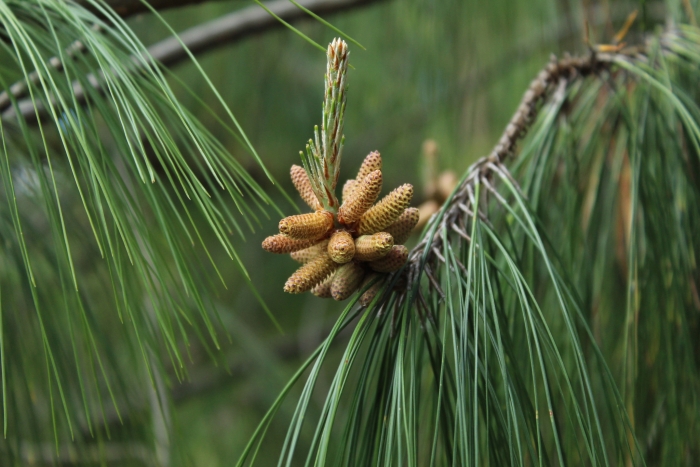Mexican Weeping Pine
(Pinus patula)
Mexican Weeping Pine (Pinus patula)
/
/

Andrés Ramírez-Barrera
CC BY 4.0
Image By:
Andrés Ramírez-Barrera
Recorded By:
Copyright:
CC BY 4.0
Copyright Notice:
Photo by: Andrés Ramírez-Barrera | License Type: CC BY 4.0 | License URL: http://creativecommons.org/licenses/by/4.0/ | Rights Holder: Andrés Ramírez-Barrera | Publisher: iNaturalist | Date Created: 2019-11-07T14:39:21-08:00 |











































Estimated Native Range
Summary
Pinus patula, commonly known as Mexican Weeping Pine, is an evergreen tree native to high-altitude cloud forests and mountainous areas in Mexico. It can grow up to 30 meters (98 feet) tall with a distinctive weeping form, where branches droop as the tree matures. The needles are long, slender, and flexible, typically arranged in groups of three, and can reach lengths of 20-30 cm. The bark is reddish-brown and furrowed, adding to the tree’s ornamental value. Mexican Weeping Pine produces cones that are narrow and curved, with a length of 5-15 cm. The timber is pale-pink to salmon, moderately soft, brittle, and emits a strong aniseed scent when freshly cut.
This species is appreciated for its unique appearance and is often used as an ornamental tree in parks and gardens, particularly in the United Kingdom, where it has received the Royal Horticultural Society’s Award of Garden Merit. It requires well-drained soils, moderate water, and thrives in full sun to partial shade. While it is not a high-maintenance tree, it can be susceptible to fungal diseases and bark beetles. Care should be taken when planting Pinus patula near buildings or other structures, as its roots can be invasive. Additionally, it is potentially invasive in some parts of the world, so it is important to check local guidelines before cultivation outside its native range.CC BY-SA 4.0
This species is appreciated for its unique appearance and is often used as an ornamental tree in parks and gardens, particularly in the United Kingdom, where it has received the Royal Horticultural Society’s Award of Garden Merit. It requires well-drained soils, moderate water, and thrives in full sun to partial shade. While it is not a high-maintenance tree, it can be susceptible to fungal diseases and bark beetles. Care should be taken when planting Pinus patula near buildings or other structures, as its roots can be invasive. Additionally, it is potentially invasive in some parts of the world, so it is important to check local guidelines before cultivation outside its native range.CC BY-SA 4.0
Plant Description
- Plant Type: Tree
- Height: 50-70 feet
- Width: 20-30 feet
- Growth Rate: Rapid
- Flower Color: N/A
- Flowering Season: Non-Flowering
- Leaf Retention: Evergreen
Growth Requirements
- Sun: Full Sun
- Water: Low, Medium
- Drainage: Medium, Fast
Common Uses
Bird Garden, Deer Resistant, Drought Tolerant, Fragrant, Low Maintenance, Rabbit Resistant, Salt Tolerant
Natural Habitat
High-altitude cloud forests and mountainous areas in Mexico
Other Names
Common Names: Patula Pine, Mexican Yellow Pine, Jelecote Pine, Spreading-Leaved Pine, Treurden, Ausgebreitete Kiefer, Jelecote-Kiefer, Mexikanische Kiefer, Pino Colorado, Ocote
Scientific Names: , Pinus patula, Pinus longepedunculata, Pinus patula subsp. longepedunculata, Pinus subpatula,
GBIF Accepted Name: Pinus patula Schiede ex Schltdl. & Cham.